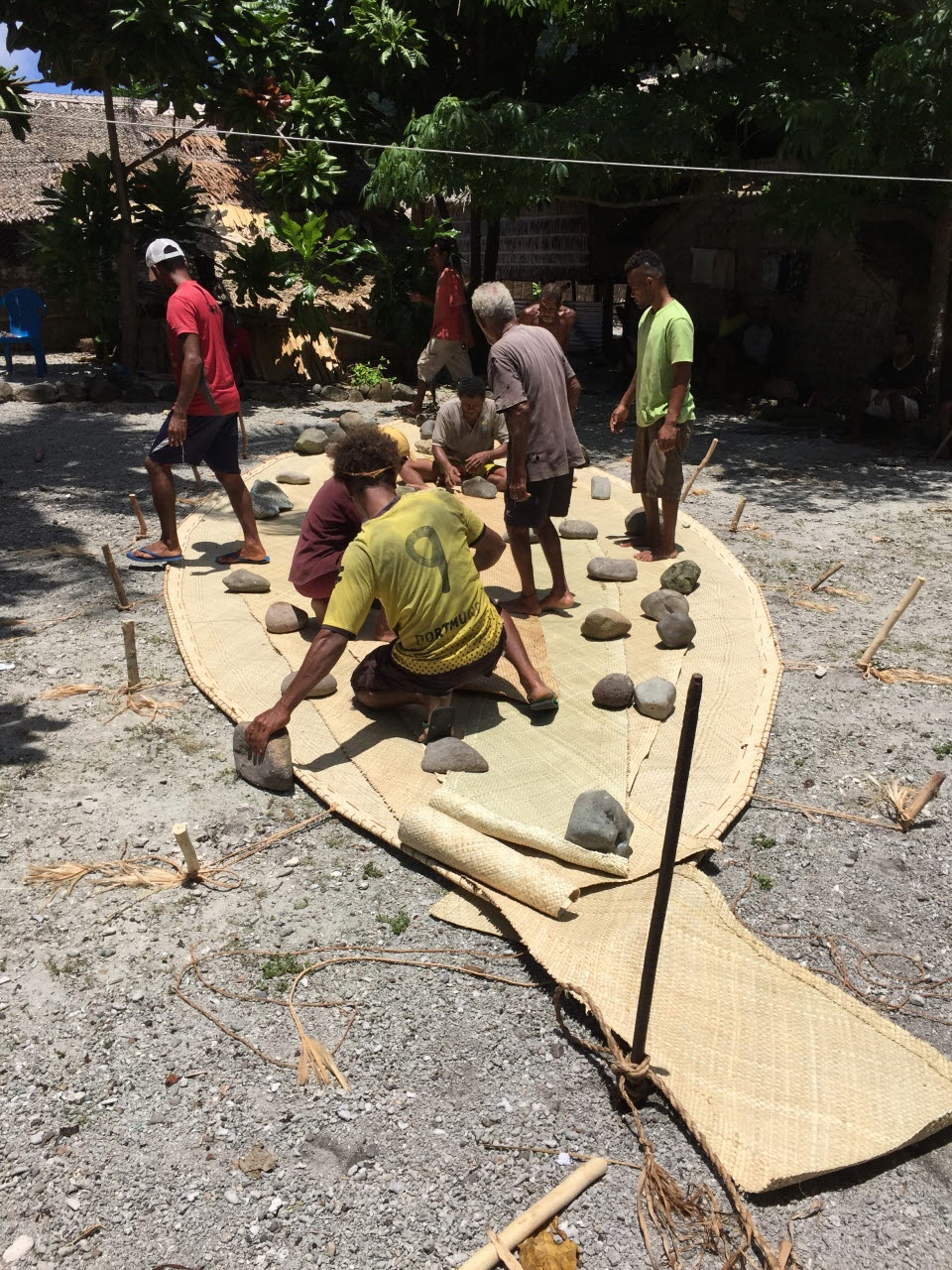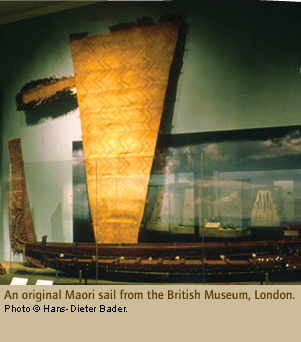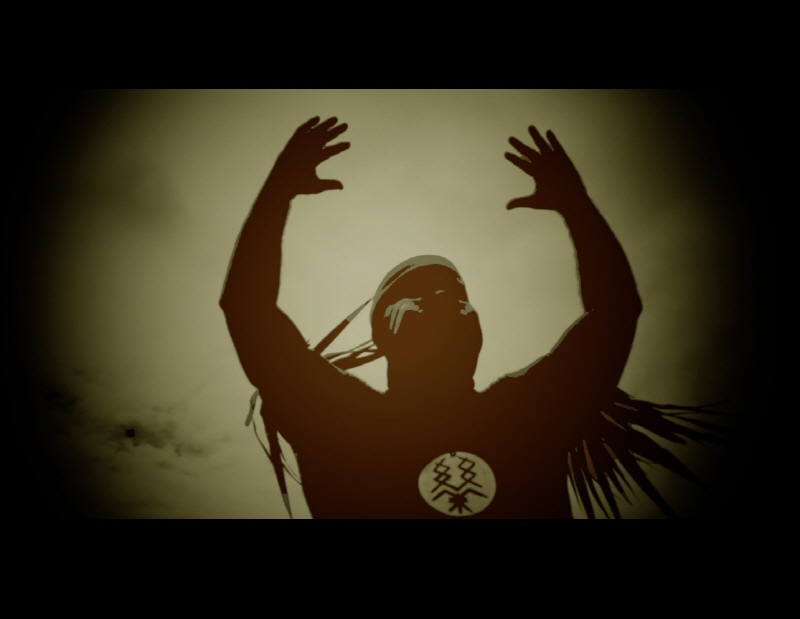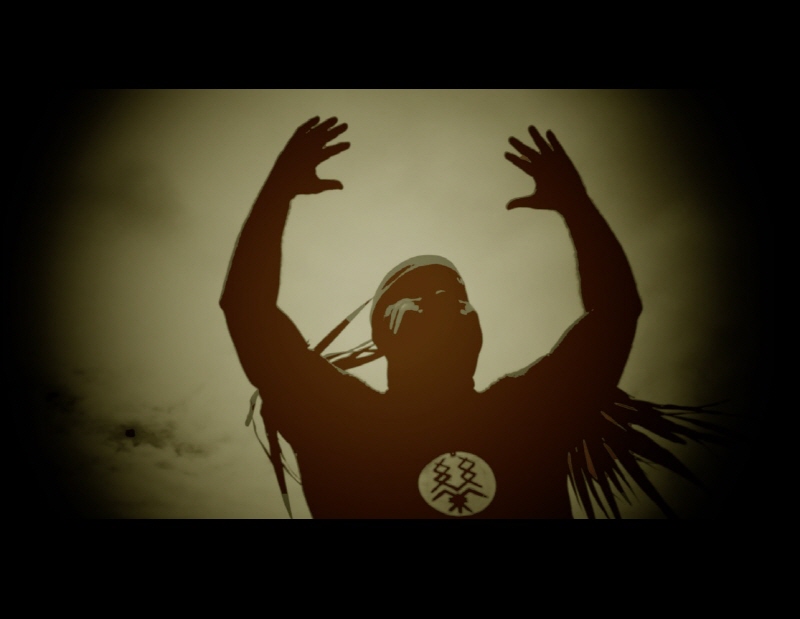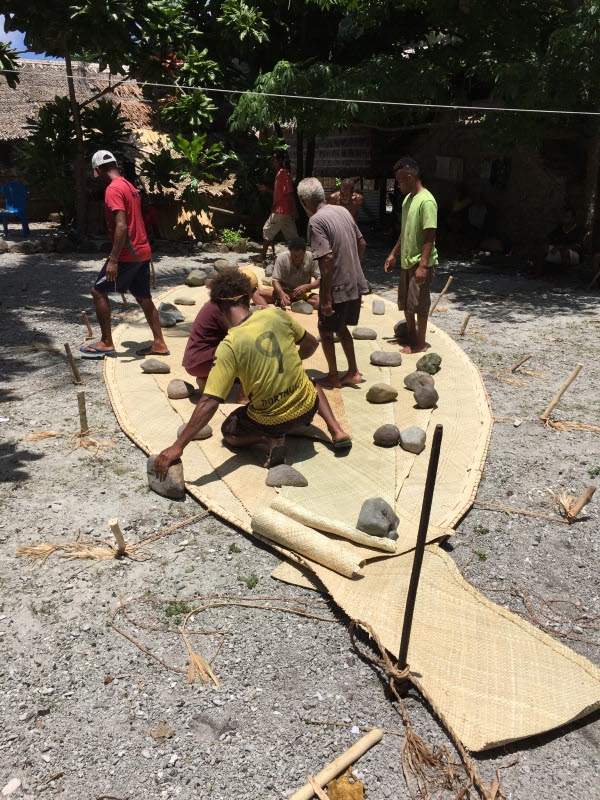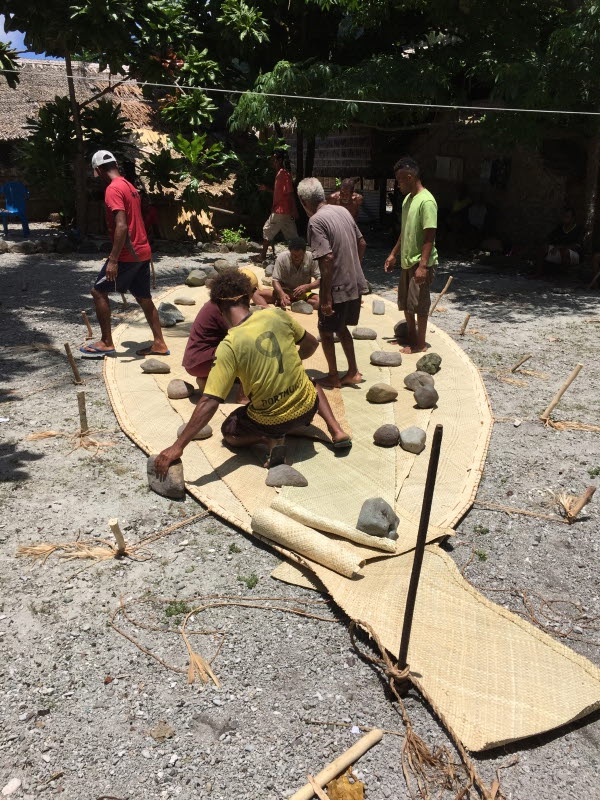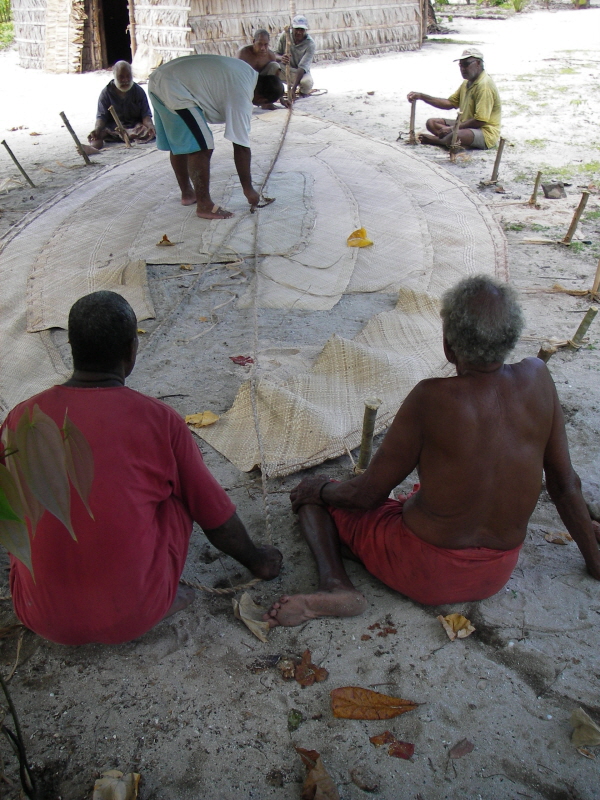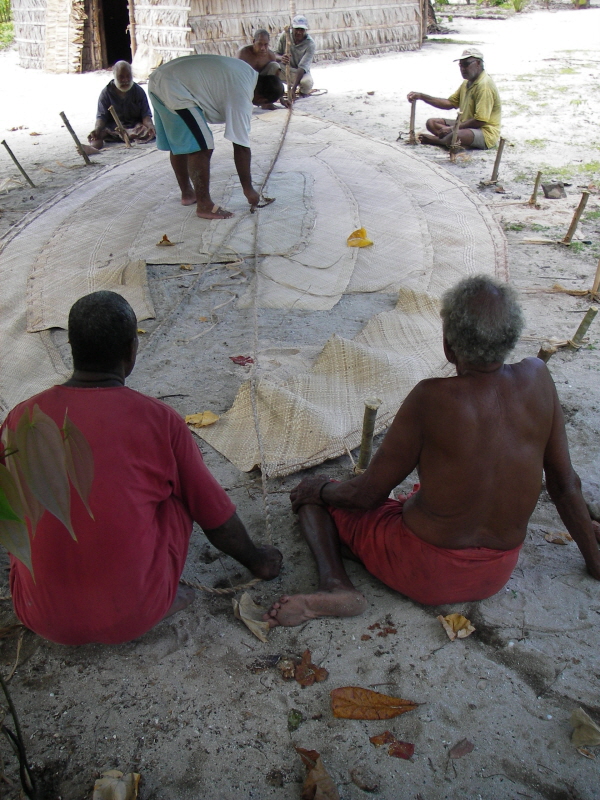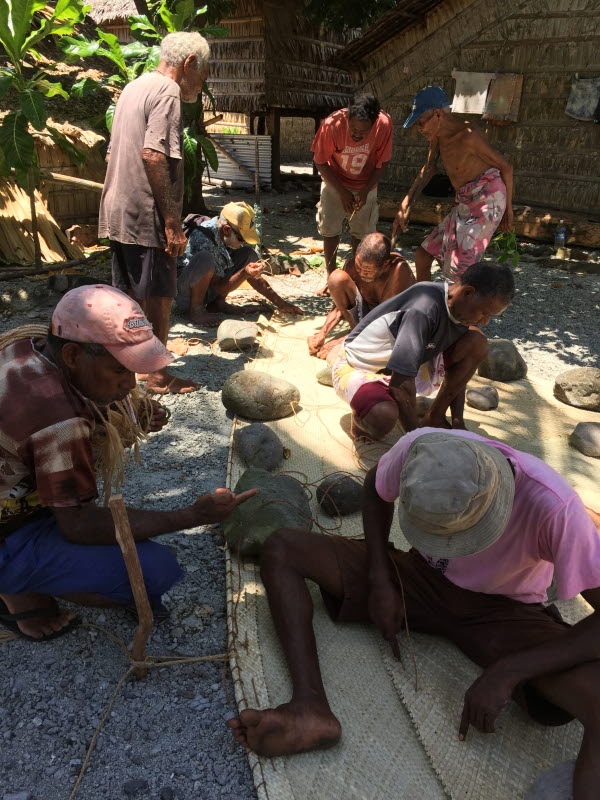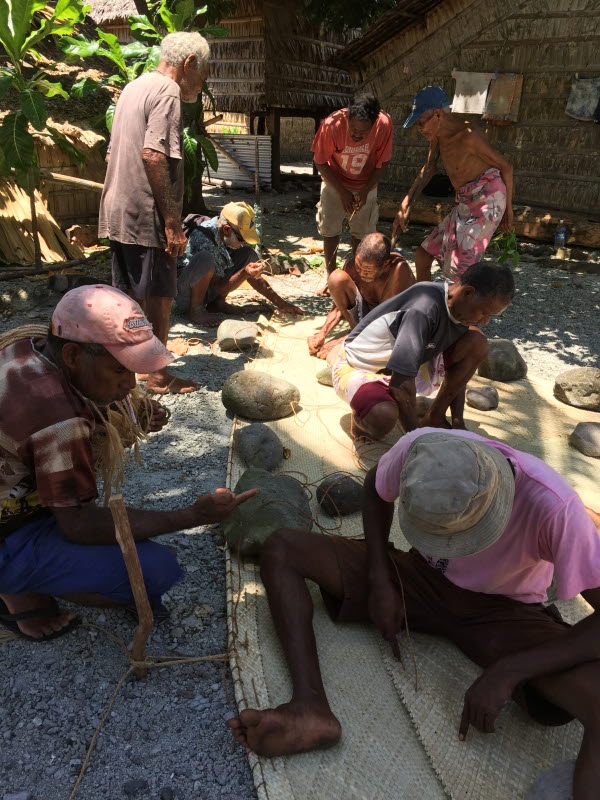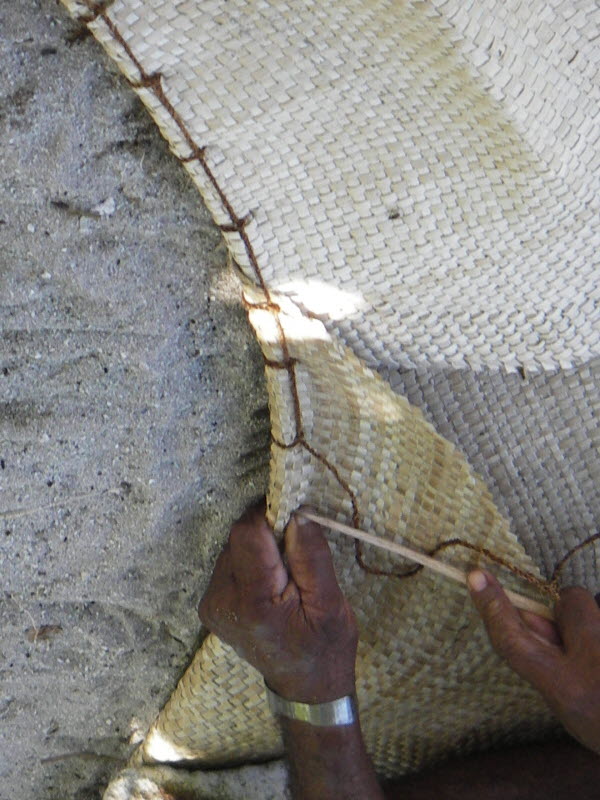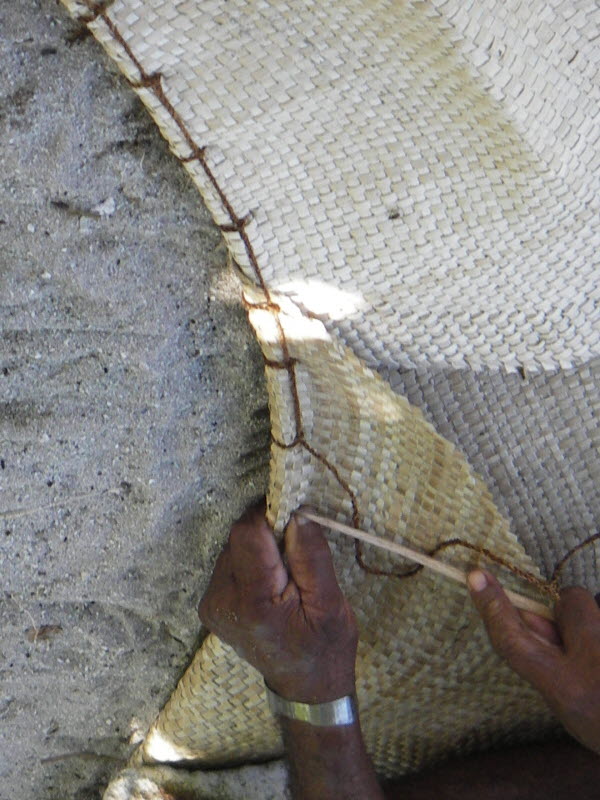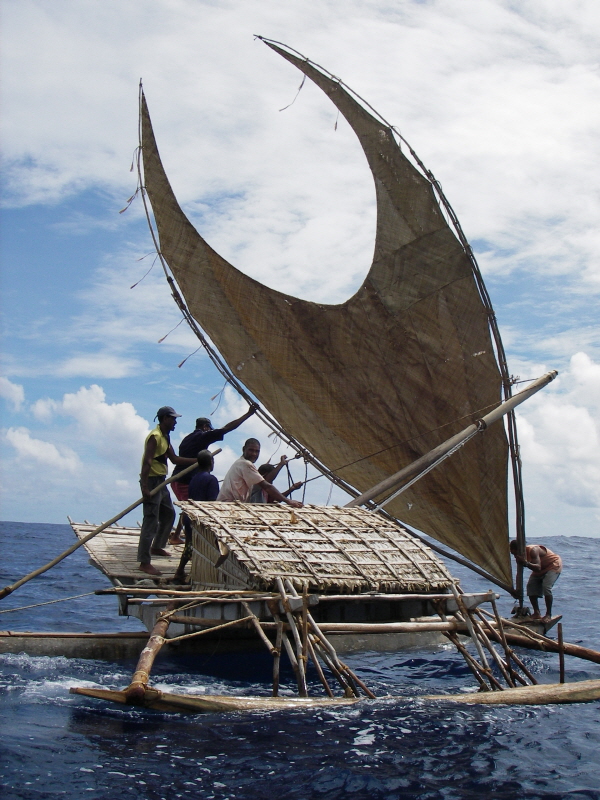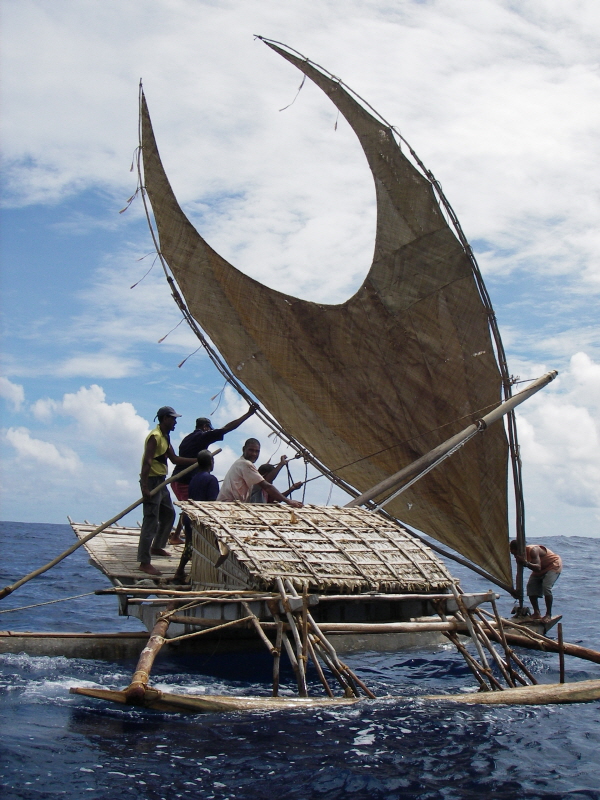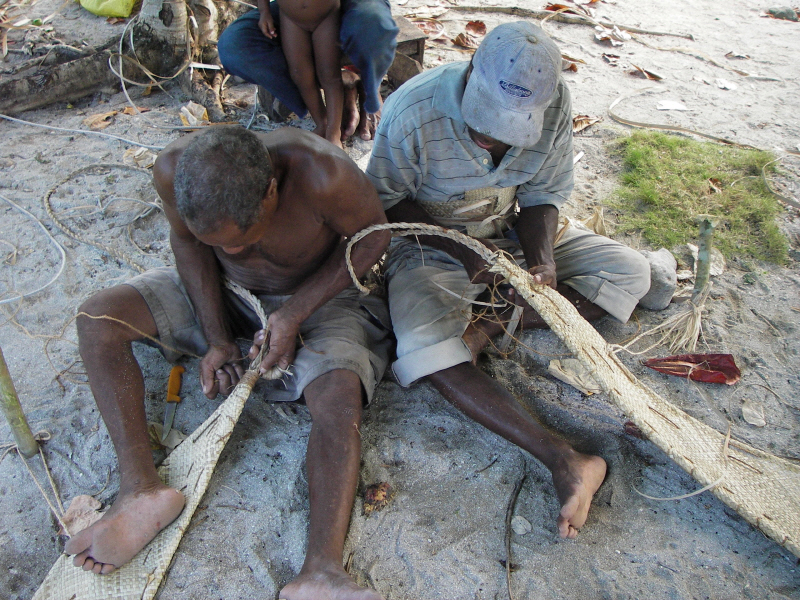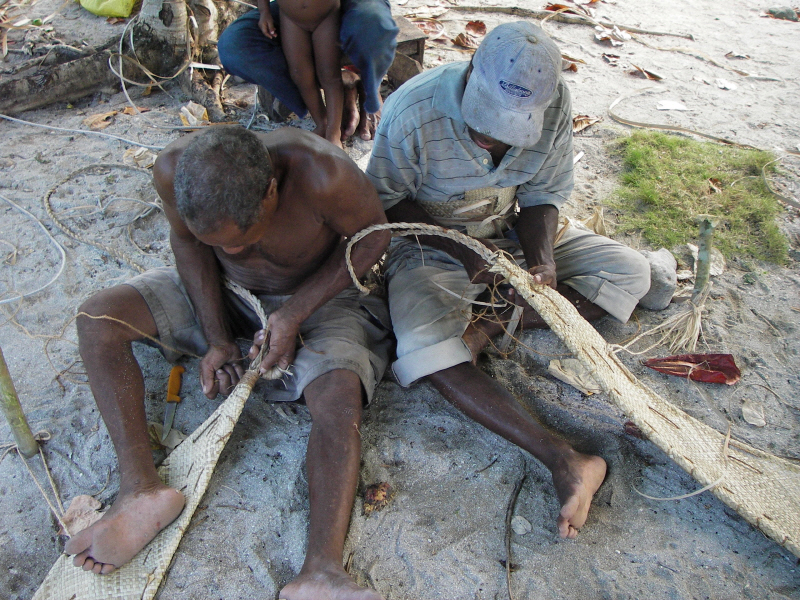The Canoe Is the People
Indigenous Navigation in the Pacific
Sails
Before modern sailcloth was available, women and girls used to weave sails from strong leaves like pandanus. (In some places, like Satawal, they still know how to do this.) They collected leaves that were long and flexible GLOSSARY flexible - easy to bend but not too young. They stored them in the women's house until they had enough to make a sail. The women sat on the floor to weave the leaves - like weaving a mat. Then the sail was cut to the right size and shape. The edge of the sail was made especially strong to resist the pull of a big wind. Small girls learned first by watching and then by practising. Weaving was one of the many things that they learned at the women's house.
Taumako voyagers still use pandanus sails all the time for sailing their vaka. To make a sail, first the women and girls harvest laupaku leaves. While they are still green, they soften them by laying them out in the sun for an hour or two, or quickly passing them over a fire. They use a strand of coconut fiber and pull it down each edge to slice off the thorns. Then they slice the leaves into long strips. They make these strips about 1cm wide, just like they make for weaving sleeping mats. Then they weave the strips together into sail mat panels. Sometimes they double weave (weaving two layers) the edges of the mat – like a thicker ‘belt’. Sometimes they weave a thicker ‘belt’ down the middle of the mat.
The men and boys lay out in the sail panels so each is in the exact position with the right size and shape They pull and cut the mats until the bottom edges of each pair meet each other at the mid-line of the sail and their top edges form the top part of the long ‘arms’ of the sail. The bottom ends of the next longest panels meet each other above where the longest panels meet each other. The top end of the second longest panel forms the ‘shoulder’ of the sail. The bottom ends of the third pair of panels meet each other on top of the second panels. The top ends of the third panels and the top ends of the two shortest panels fill the top of the inside of the sail—which forms most of the middle of the ‘quarter moon’ curve of the sail.
After they sew the panels together they measure the position of the inside curve and lay out a line in the shape of a crescent moon. This line becomes the bolt rope of the inner edge of the sail. Their heroic ancestor Lata was the first person to make a sail, so this long-armed crescent shape is the image of “Lata holding his arms over his head.” Perhaps Lata is grasping the wind!
Meanwhile women weave strips of inner bark into sail ties. When the sail has been sewn these sail ties are attached to the outside edge of the sail and the outside edge of the sail is tied onto the two boom
Taumako weavers
Mimi George and Simon Salopuka
“One of the most useful plants on the island is Pandanus…women and girls harvest the leaves to weave into sleeping mats, baskets, and sails.”
Taumako women and girls usually weave 8 panels per sail for a Te Puke type of Vaka. The sail panels are arranged with the length running top to bottom of the sail. The longest panels are for the outside edges of the sail. The shortest panels are for the center of the sail. Taumako weavers measure the length a panel by holding her arms out at full length and measuring from the longest fingertip of one hand to the longest fingertip of the other hand. This measurement is called 1 fadom. She makes two longest panels the same length as the length of the main hull of the Te Puke—which is about 6 fadom long. She makes the second pair of sail panels 5 fadom long. She makes the next pair 4 fadom long. She makes the shortest panel 3 fadom long.






